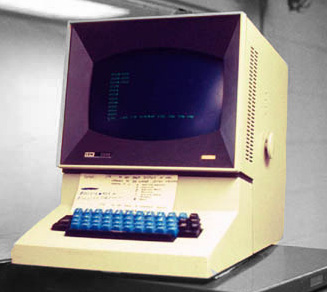
How Dark Mode Became Default
Seriously, I can't imagine my daily used devices and apps without dark mode. I mean, I'm now so used to it that I feel like if I use light mode, I will get a headache. You can see we have dark mode right. Or maybe you are using it right now. But how did we get here? How did dark mode become the default for many apps and websites? Let's explore the history and evolution of dark mode in the digital world.
Early Days: Light Mode Was the Default
Now, it feels nostalgic to think about the apps and websites that were only available in light mode. If you are a 90s kid or an early 2000s kid, you might remember the days when everything was in light mode on the internet and on our devices.
Those things were so bright and colorful. We can say it's inspired by paper and books (white backgrounds, black text). Screens were brighter and more colorful, and the dark mode was not even a thing. The light mode was ruling the world.
The Shift Begins: Why Dark Mode Started Becoming Popular
In the early days of computing, dark mode wasn't a design choice, but yes, because of technical limitations, early IBM terminals used a black background and green or amber text because of CRT monitors. Cathode-ray tube (CRT) monitors naturally displayed black when inactive. At that time, dark mode was just the only option available.

As technology improved and the screens became more advanced, the light mode started to become popular. Operating systems like Windows and Mac OS adopted the light mode as the default. For many years, light mode became the standard for most apps and websites.
But around the mid-2010s, the trend started to shift. The dark mode started getting popular. Many developers and designers started to realize that dark mode can be easier on the eyes; also, it can save battery life on OLED screens. The dark mode was not just a trend; it was a necessity for many users.
Dark mode gives aesthetic vibes. It looks simple, cool, and modern.
Major Tech Companies Embrace It
In 2018, Apple introduced dark mode in macOS Mojave, and it was a game-changer. Not only this, but in 2019 Apple also introduced dark mode in iOS 13. This was a huge step for dark mode, and it made it more mainstream.
Google also introduced system-wide dark mode in Android 10, and many apps like YouTube, Twitter, and Instagram followed suit. Microsoft also introduced dark mode in Windows 10, and many of its apps, like Office and Edge, also adopted dark mode.
The Psychology of Dark Mode
Now let's talk about why people feel dark mode is better. Here are some reasons why people want everything in dark mode:
Eye Strain: You know, the light mode can be harsh on the eyes, especially at night. Dark mode is easier and more comfortable to read in low-light conditions. You feel less eye strain and fatigue.
Focus: Dark mode can help you to stay focused on the content. A dark background with light text can help you to reduce distractions and improve your concentration.
Premium Look: Dark mode looks simple and modern. It gives a premium look to the apps, OS, and websites. Many people prefer dark mode because it looks more elegant and sophisticated.
The Challenges with Dark Mode
Not always better for readability - Dark mode is good at night, but it can be a challenge in bright light (but I still use it). I mean, my friends are also facing this, so they're switching to light mode. Anyways, nowadays many apps or OSs support auto-switching between light and dark mode based on the time of day or the ambient light conditions.
Design complexity - Now designers and developers have to consider both light and dark modes when developing websites and apps. Thanks to CSS libraries and frameworks that make it easier to implement dark mode. But still, in many places developers are facing challenges with dark mode. For example, some colors and images may not look good in dark mode, and it is very difficult to maintain consistency across both modes.
Where Are We Now?
Well, dark mode is not just a mode; it's default now. At least for me, on mobile and laptop, I always use dark mode. Right now, in the Cursor code editor, I'm using dark mode. As a developer, I can't imagine writing code in light mode.
And nowadays, many websites launch with just dark mode. Many apps and websites are now offering dark mode as the default option. It's not just a trend; it's a standard. Many users are now expecting dark mode as the default option, and many developers are now considering dark mode as a must-have feature.
Some apps like Discord and Twitch and even websites like GitHub are now providing a dark-first experience.
With the advancement of technology, websites and apps now adapt to system settings. If your device is set to dark mode, the website or app will automatically switch to dark mode as well. This ensures a seamless and consistent experience for users across all their devices.
Conclusion
Dark mode isn't just a feature anymore; it's a standard. It's a part of how we experience technology—personalized, controlled, and a little easier on our tired eyes.
So, Team Dark Mode forever... unless I'm trying to read in sunlight.